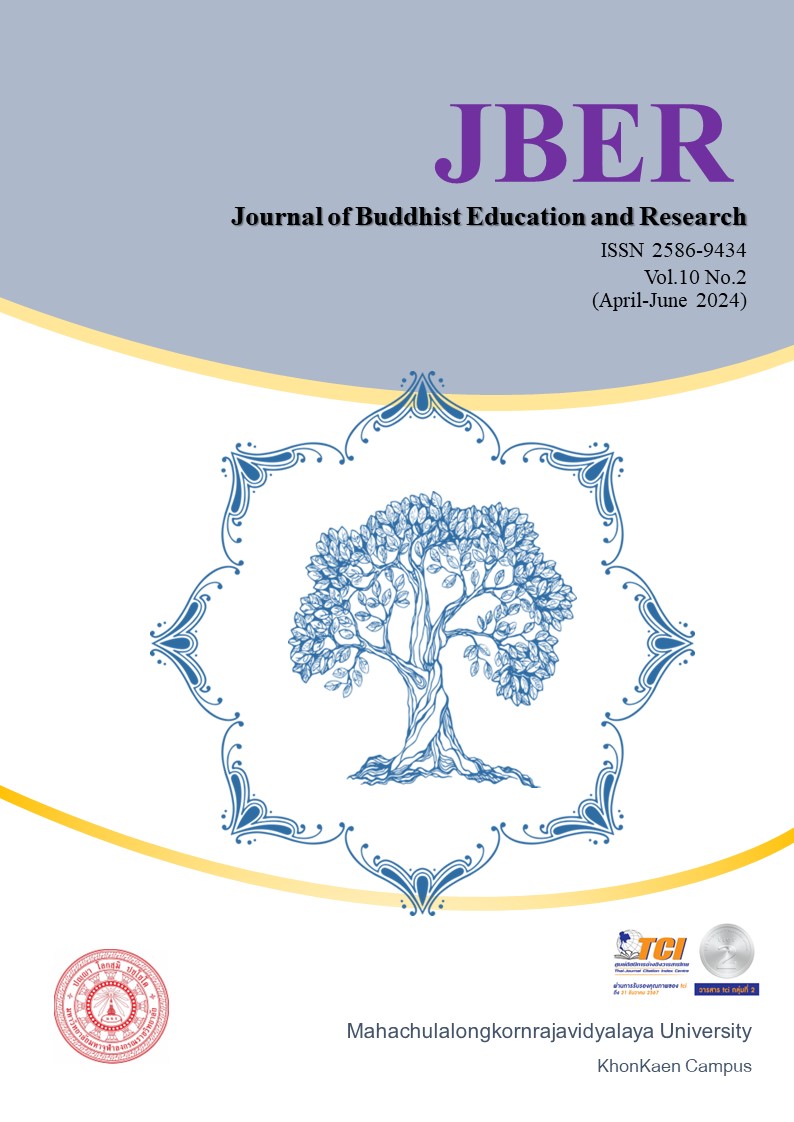GUIDELINES FOR THE DEVELOPMENT OF EAR TRAINING TEACHING AND LEARNING OF PRE-COLLEGE STUDENTS, COLLEGE OF MUSIC, MAHIDOL UNIVERSITY
Keywords:
guidelines to develop, ear training teaching and learning, pre-college musicAbstract
The objective of this research is to study: 1) ear training teaching and learning approaches in the pre-college level, College of Music, Mahidol University; and 2) guidelines to develop ear training teaching and learning methods for the pre-college level, College of Music, Mahidol University. The research was conducted using focus group discussion, non-participant observation, and semi-structured interview. Respondents were divided into two groups: Group 1 consisting of 36 students in Mathayom 4-6 (higher secondary level), Pre-College, College of Music, Mahidol University; and Group 2 consisting of 12 Pre-College committee members, ear training instructors, and music educators, all from purposive sampling. Research instruments included forms for focus group discussion, non-participant observation, and semi-structured interview. Research findings were separated into two parts. First, teaching and learning approaches were assessed in five aspects: 1) The first part of the curriculum and content of Mathayom 4 overlapped with TIME’s Grade 9 aural skills and students in Mathayom 5 and 6 were grouped based on their ability; 2) The instructors were well-prepared and utilized good teaching techniques; 3) Learning activities were consistent and diverse; 4) The media and equipment were modern and suitable for the content and the classrooms were appropriate; and 5) The evaluation and assessment was clear and based on various skills. Second, the guidelines to develop ear training teaching and learning highlighted five aspects: 1) Curriculum and Content; 2) Instructors; 3) Learning Activities; 4) Media, Equipment and Classroom; and 5) Evaluation and Assessment.
References
จิรภัทร์ ถิ่นทะเล (2564). การศึกษาผลสัมฤทธิ์ทางการเรียนโสตทักษะทางดนตรีด้วยชุดกิจกรรมเพื่อ เสริมสร้างโสตทักษะทางดนตรี ตามแนวคิดของโคดายสำหรับนักเรียนขับร้องประสานเสียง โรงเรียนเปรมประชาวัฒนา. วารสาร มจร พุทธปัญญาปริทรรศน์. 6(2). 31-41.
ชนาธิป พรกุล. (2552). การออกแบบการสอน การบูรณาการการอ่าน การคิดวิเคราะห์ และการเขียน. กรุงเทพมหานคร: วี. พริ้นท์.
ณรุทธ์ สุทธจิตต์ (2555). ดนตรีศึกษา: หลักการและสาระสำคัญ. (พิมพ์ครั้งที่ 9). กรุงเทพมหานคร: แอคทีฟ
พริ้นท์ จำกัด.
เดชาชัย สุจริตจันทร์. (2549). การเปรียบเทียบผลสัมฤทธิ์ทางการเรียนดนตรี เรื่องการอ่านโน้ตสากลเบื้องต้นของนักเรียนชั้นประถมศึกษาปีที่ 3 ที่เรียนตามวิธีการสอนของโคดายกับวิธีสอนปกติ. วิทยานิพนธ์ปริญญาครุศาสตรมหาบัณฑิต. มหาวิทยาลัยราชภัฎเทพสตรี.
นิอร เตรัตนชัย (2562). การศึกษาการสอนโสตทักษะตามแนว สุดา พนมยงค์. วารสารมนุษยศาสตร์วิชาการ.
(1). 315-345
พงษ์ลดา นาควิเชียร. (2537). การเปรียบเทียบผลสัมฤทธิ์ทางการเรียนดนตรีสากลขั้นพื้นฐานของนักเรียนชั้น
ประถมศึกษาปีที่ 2 ที่เรียนโดยการสอนตามแนวคิดของโคดายกับการสอนตามแนวคิดของเบอร์เกตันและบอร์ดแมน. วิทยานิพนธ์ปริญญาครุศาสตรมหาบัณฑิต. จุฬาลงกรณ์มหาวิทยาลัย.
สุทธาสินี ถีระพันธ์. (2558). การศึกษาเปรียบเทียบผลการเรียนขับร้องของนักเรียนชั้นประถมปีที่ 6 ระหว่างกลุ่มที่ใช้วิธีสอนดนตรีแบบโคดายกับกลุ่มที่ใช้วิธีสอนปกติ โรงเรียนราชประชานุเคราะห์ 50จังหวัดขอนแก่น. วิทยานิพนธ์ปริญญาศิลปกรรมศาสตรมหาบัณฑิต. มหาวิทยาลัยมหาสารคาม.
สุรางค์ โค้วตระกูล. (2559). จิตวิทยาการศึกษา. (พิมพ์ครั้งที่ 12). กรุงเทพมหานคร: โรงพิมพ์แห่งจุฬาลงกรณ์
มหาวิทยาลัย
Kielczewski, N., M. (2011). The effect of Music Learning Theory on sight singing ability of Middle
school students. Master’s thesis. The University of Toledo, Ohio.
Nite S. B., Tacka, P., Houlahan, M., et al. (2015). The Effect of Kodály Training on Music Teachers’ sight Singing Skills. Literacy Information and Computer Education Journal, 2(3). 2013- 2019.
Downloads
Published
How to Cite
Issue
Section
License

This work is licensed under a Creative Commons Attribution-NonCommercial-NoDerivatives 4.0 International License.





